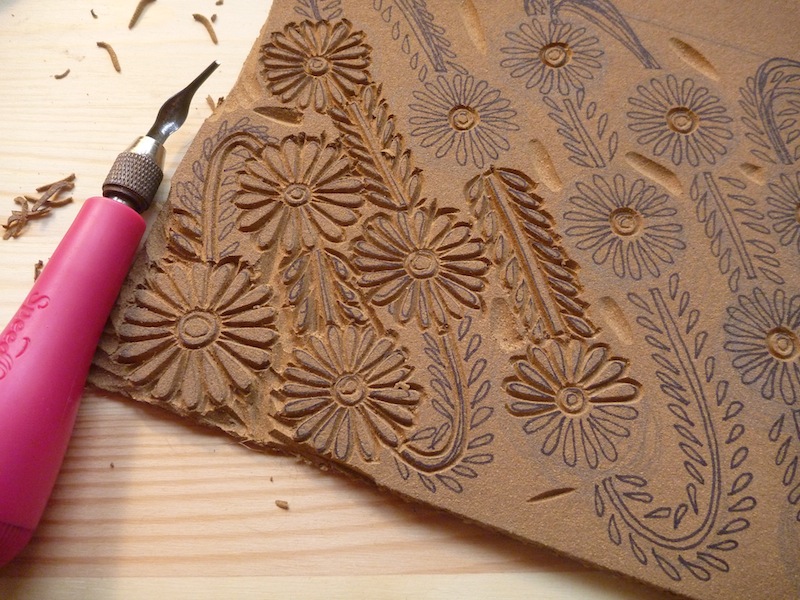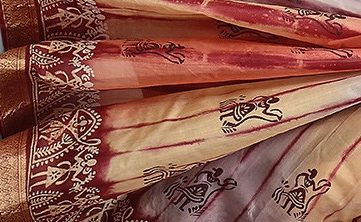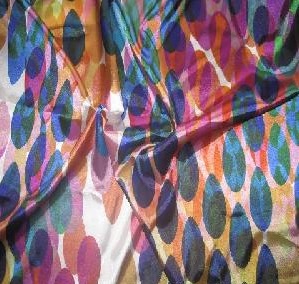
Printed Silk

Printed Silk
Printed silk refers to a length of silk yarn or silk garments that have patterns and designs in the form of prints on them. This is in contrast to the original form of introducing designs into a yarn of silk fabric by manipulating the weaving process so that the pattern was inseparable from the saree itself. Printed silk is a more contemporary form of stylizing silk and offers many benefits to the contemporary buyer in the form of cost-effectiveness (if machine printed) and versatility. In India, it has picked up in popularity since around the 2010s. The prints and motifs used in such manner have seen a lot of influence from pop-culture, modern art and Bollywood.
Background
Silk is one of the oldest fabrics in India. Its use in royal garments, formal wear and opulent clothing is so great in the history of India, that many have forgotten its point of origin, which is China. Traditional experimentation with silk in terms of designing all trace back to tweaking the process of weaving the silk yarn. This is how brocades were produced that included a number of motifs made of different colored silk threads and/or metallic threads such as gold and silver.
However, in the last couple of decades, printing on silk has become very popular. Although, block printing is a practically a tradition in India, practiced by a number of communities for a very long time, industrially produced printed silk is only a recent phenomenon. This form of designing in the silk fabric has come about for the following reasons:
- The cost of production is lower owing to the industrial revolution and globalization of the available technology.
- The process is time efficient as well as less on human effort.
- A larger number of innovative, intricate designs can be produced in a smaller amount of time.
- Every element of printing, right from the color to the fabric, is industrially treated and cured so that the nature of the print is permanent and clean. In hand printing, there is always room for human error.
Sources of Inspiration
Printed silk was first brought to the forefront by designers and boutique houses that wanted to showcase the versatility of silk garments. While this was initially restricted to hand printed items, the idea of machine printing silk gradually trickled down and is now huge in the market. First seen on the ramp, printed silk initially showcased a number of unusual motifs such as geometric prints, splashes of color and more. For instance, there are many forms of fine art in India that are now being used as motifs on sarees and salwar kameez. However, these patterns cannot be embroidered onto the garment and hand printing is only a viable option for customization. Mass production of a Jamini Roy silk saree or a Kalighat Painting silk saree however, needs smart processes of machine printing where the motif can be made into a block that will then be administered onto the cloth by a machine, under the guidance of a craftsman. Besides the two motifs mentioned above, this technique has now been adapted to any and every type of print one can imagine, whether traditional or modern.
(Also Read: Art Silk Fabric)
The Making
Since the onset of the industrial revolution almost all processes have been mechanized. So much so, that hand crafting is gradually becoming a lost art which experts are now trying to revive and bring back into mainstream fashion as well as commerce. One of the many processes that were taken over by factory production was the embellishment of silk. Whether standalone styles or more affordable versions of the classics such as Madhubani sarees or unique designer sarees using printed silk, the use of machinery is integral and now inseparable from the textile industry.
Hand printing on silk, also known as woodblock printing, involves carving a block of wood with the required design and manually decorating the fabric with it. While machine printing follows the same principles, the blocks are carved and then fitted into a slot in the printing machine and from thereon it is applied onto the desired parts of the saree.
Whether machine printed or hand-printed, the blocks can vary in sizes and detail based on the need and creative vision of the designer.
Variety
Hand Printing
Woodblock printing is another name given to this style of printing and is one of the most important cottage industries in the country. When done on silk, the textile becomes more expensive due to the man-hours spent on embellishing the fabric in just the right way. Hand printing as a cottage industry has emerged in a big way since there are certain communities in India, especially in Rajasthan that practice the art specifically. The most common motifs used on hand printed silk textiles are intricate floral and paisley patterns and include blossoms and vines. Floral and butti motifs are commonly associated with India. Hand printed silk garments are extremely expensive and second only to hand embroidered or hand woven textiles.
(Also Read: Gamthi Print)
Machine Printing
There is no dearth of prints that can be administered from a machine onto cloth. Although a block still has to be carved out with the intricate pattern that needs to be applied, the finish is a lot cleaner, the blocks last longer and the process is much faster. It has been observed that silk fabrics with concentrated prints are usually machine made, implying that machine printing is useful for close-together prints and needn’t be spaced apart for clarity as is the case with hand printing. One of the reasons why machine printed silk garments are so popular is because they use the most formal of all Indian textiles, i.e. silk, that is combined with rich prints that can even be in the color gold to give an impression of zari ka kaam in print. Machine printed silk sarees are easier on the pocket as producing them comparatively low cost.
Present Day Scenario and Global Influence
Printed silk is becoming more popular by the day because it has the flexibility of having the same motifs on silk as a traditional Kanjeevaram would have while also paying less. The prints on silk have diversified over the years and modern sarees and other ethnic Indian garments that are created specifically to cater to younger, working women are more appealing. For instance, one of the most popular prints on silk in the recent times is the Warli print on silk sarees, suit pieces, dupattas, stoles and other items. This motif originates from one of the oldest paintings of Madhya Pradesh, but because it was uncommon in mainstream urban fashion, it really picked up pace and became fashionable, especially when mixed with borders in hot pink, bottle green and other peppy hues. Madhubani print on Tussar silk, although a very specific example, is one of the most popular buys at culture fairs and ethnic bazaars around the country.
Wearing the Attire
Printed silk is one of the most versatile fabrics that has come about in Indian fashion in recent times. It is best to accessorize it with chunky jewelry in silver, precious stones or wood so as to give the whole ensemble a very artsy vibe. The whole appeal of printed silk is to appear chic and modern in a traditional Indian attire.
(Also Read: Dilli Haat– Delhi’s New Age Shopping Hub)
Maintenance
Silk as a fabric in itself is best maintained when dry cleaned. However, if it is to be washed then it should be dried in a shaded area. The colors on printed silk items are cured at the time of purchase, which is why there is no need to worry about leeching. Besides, silk is a very porous fabric that absorbs color very well.
References
Categories: Motifs & Embroideries

